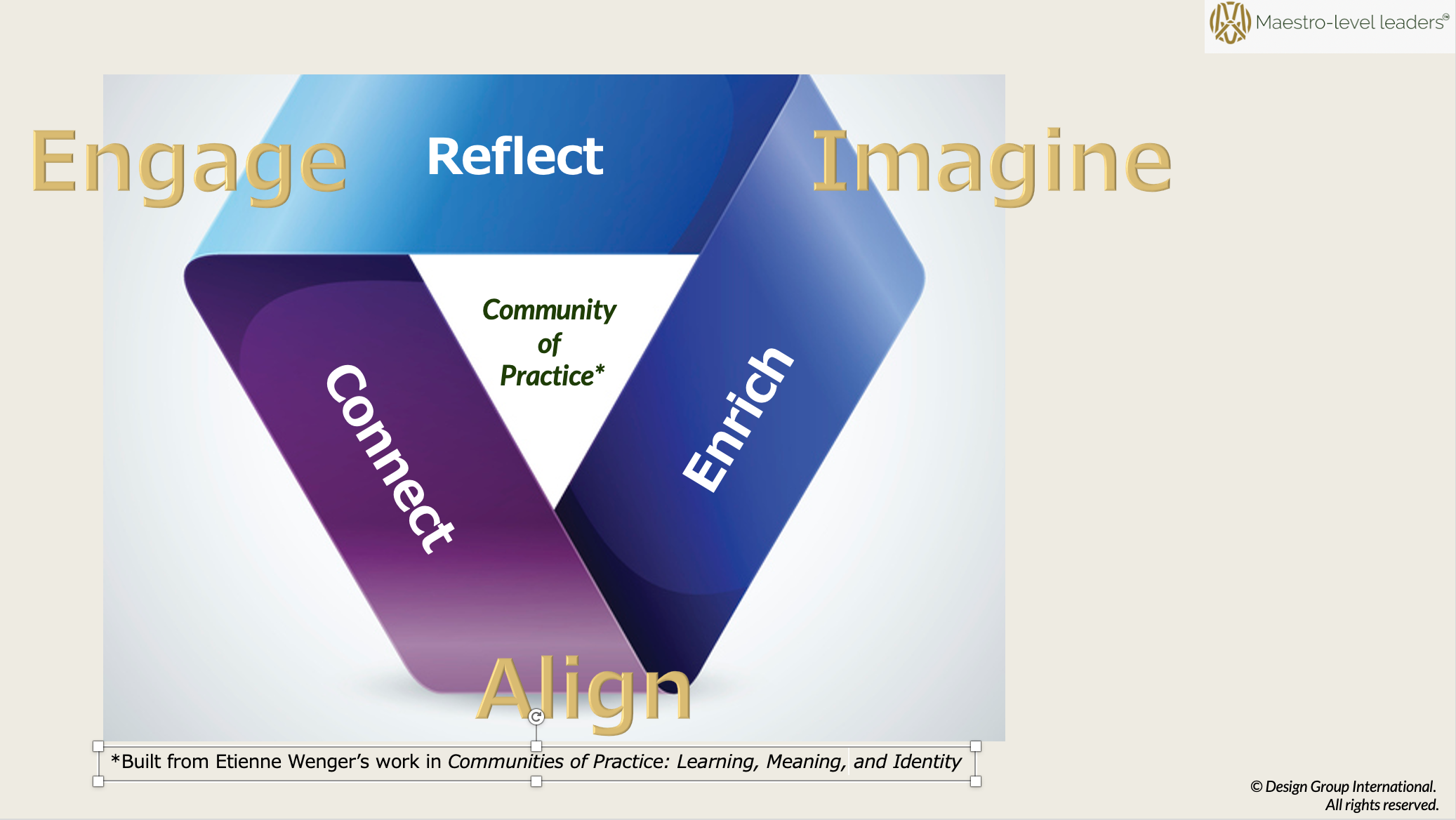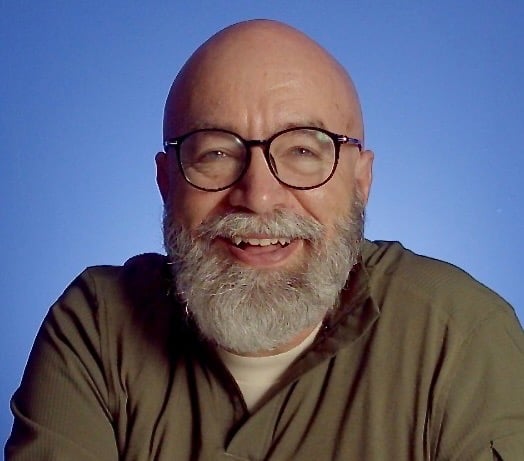
A successful Third Turn of executive leadership identifies and begins to extract future value in preparation for succession. Maestro-level leaders cannot do this by themselves. Their Senior Executive Team and the Board get in on the effort as the executive's supporting Community of Practice (COP).
Etienne Wenger offers this simple definition of a Community of Practice:
"sustained pursuit of a shared enterprise"
Many groups fit this description, including those who populate a C- Suite. The whole idea of sustained pursuit is that the pursuit continues beyond those who currently hold the leadership mantle. It means doing, reflecting, and re-tooling based upon learning. Then doing, reflecting, and re-tooling yet again, and continually.
The Maestro-level leader needs assurance that the Board and Executive Team is committed to a skilled, sustained operational excellence effort, or they cannot face fully into an unknown future and begin to craft future value out of the mist.
Let's render a Community of Practice this way, borrowing heavily from Wenger:

Each corner identifies a means by which we might belong to an Executive Leadership Community of Practice and thereby shape our identity, find meaning, and continue learning as a community as well as individuals
Imagination - I am part of the practice: conceiving of it and helping it land in new places and applications.
Engagement - I am part of this practice: making it happen and helping to advance and refine it.
Alignment - I am part of the practice: helping it find boundaries, practices, and patterns that make us efficient and effective.
- Imagination and Alignment working together provide enrichment, enlivening and updating that which is routine. This combination helps to design advances that become new/updated policies and playbooks.
- Engagement and Imagination working together empower reflection. Their combination gives us the desire to reflect, evaluate, imagine, innovate, plan, get tactical, and form objectives we will go after.
- Alignment and Engagement connect the Community of Practice with the administrative platform upon which it runs. Combined, they create reliability, efficiency, data management, reportability, and a recognizable brand.
Executive leaders functioning as a Community of Practice need to belong to it via all three of these means. Even more, they need to understand and embrace how all three work together. Then they can recognize their organizational moment and go after it.
- Leaders can't just be off imagining possibilities without turning some of them into something.
- Leaders cannot expect people to align with tired and underserving procedures.
- Executive Leaders cannot expect people to bring their full engagement to something that they do not understand or discover does not call to them.
Individually, let's recognize that while all three need to be embraced, we get to the other two through the one that naturally works best for us. For instance, I easily engage in Imagination, and to get serious about alignment I need to be engaged in some way. I naturally run I->E->A. What order flows best for you?
Organizationally, we can also recognize that a certain moment might call for one of these three to be engaged more intensively than another for the health and stability of the enterprise. For instance, if new business is landing while infrastructure is not built out enough to support it, that Community of Practice has to focus on alignment or engagement for a time, with less emphasis on imagination. Perhaps such an organization runs A->E->I. What flow needs to be emphasized in your organization at this time?
If imagination is not the leader's personally preferred doorway, they need the Executive Team, as a Community of Practice, to provide that extra imaginative boost.
If Imagination is the leader's natural doorway, then the Executive Community of Practice makes sure the core business is well-run while that Maestro-level leader is imagining, exploring, building, and implementing toward future value.
Let's put a stake in the ground here. A Maestro-level leader in a Third Turn has to find strength for the imagination side of the organization. If they are not personally strong here, they have to find assistance---companions and guides. If they are imaginatively strong, they should not be off doing this work in isolation.
What does it look like to engage in Imagination?
- gazing upon the current form of practice - its products, policies, procedures, patterns, norms, and functions - to see what else may be
- engaging the imagination out of necessity even if others do not yet see that necessity and may yet be unwilling.
If a Community of Practice is not set up to renew and grow by incorporating new insights, the needed engagement with imagination can unmoor the Executive in a Third Turn . If the Third Turn leader cannot be troubled to bring insight to their executive colleagues - so they can build new levels of engagement and alignment around discovery and innovation - the failure to engage imagination can also unmoor the organization.
These ideas are critical to grasp for successful long-term executive leadership. Let's have a longer conversation about constructing your Third Turn.
Reach me at marklvincent@designgroupintl.com.
Tags:
executive leadership, Mark L. Vincent, Design Group International, Community of Practice, Maestro-level Leaders, The Third Turn, Imagination, Alignment, Etienne Wenger, Engagement
March 11, 2021


Comments